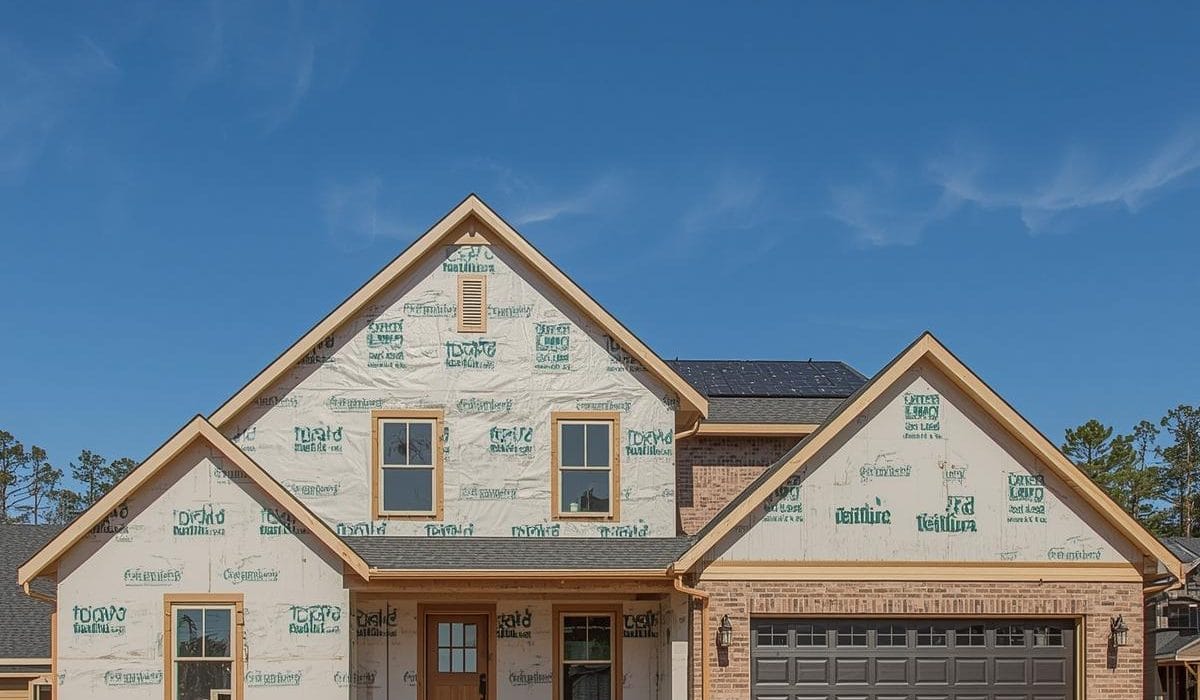Introduction
Building a home takes 6 to 12 months on average, depending on your home’s size, design, and location.
Production homes can finish in 3–7 months, while custom-built houses may require 9–16+ months due to permits, design changes, or weather-related delays.
Building your dream home is one of the most exciting yet challenging journeys you’ll ever take. One question every homeowner asks before breaking ground is: “How long does it actually take to build a home?”
The truth is — the process depends on several factors: design complexity, builder experience, permits, materials, and even the weather. In this guide, you’ll get real timelines, expert-backed data, and practical tips so you can plan your project with confidence and avoid frustrating delays.
Why Knowing the Timeline Matters Before You Build
Many homeowners underestimate how long home construction really takes. When you don’t know the realistic timeline, you risk budget overruns, rushed decisions, and unnecessary stress.
A clear timeline helps you:
- Plan your finances and mortgage draw schedules.
- Schedule temporary housing or rent while construction is ongoing.
- Keep your contractor and suppliers accountable.
Understanding the build timeline isn’t just about “when you can move in.” It’s about managing expectations, maintaining cash flow, and making smart construction choices.
The Average Time to Build a Home (According to Experts & Real Data)
Homebuilding timelines vary by region, project size, and construction method.
According to several trusted industry sources:
- Realtor.com reports that most homes take 6 to 12 months to complete.
- Fox Blocks estimates an average of 7 months from foundation to finish.
- ANGI adds that complex or custom builds can take up to 16 months or longer.
Realistically, you can expect 6 to 12 months for a typical build — but smaller homes with standard layouts may finish in 4–6 months, while fully custom homes may exceed a year.
Production vs Custom Builds,Why It Changes Everything
| Type of Build | Typical Timeline | Why It Varies |
| Production (Spec Home) | 3–7 months | Fewer design choices, pre-approved plans, faster construction. |
| Semi-Custom Home | 6–10 months | Some design freedom, moderate customization, slight delays. |
| Fully Custom Home | 9–16+ months | Complex design, owner involvement, longer permits & decision cycles. |
Explanation:
Production homes follow pre-set blueprints and have established supply chains, which makes them faster. Semi-custom and custom builds involve architectural changes, material sourcing, and owner decisions that extend the overall timeline.
Step-by-Step Construction Timeline (Phase-by-Phase Breakdown)
Every home build passes through distinct phases, each taking a specific amount of time. Understanding what happens in each step helps you track progress and identify delays early.
| Phase | Typical Duration | Key Activities |
| Pre-Construction & Permits | 1–4 months | Design approval, soil testing, permit applications. |
| Foundation & Site Prep | 2–6 weeks | Land clearing, excavation, pouring concrete. |
| Framing & Roofing | 2–8 weeks | Building structural framework, roof installation. |
| Mechanical & Rough-Ins | 2–6 weeks | Plumbing, electrical, HVAC, and insulation. |
| Interior & Exterior Finishes | 3–8 weeks | Drywall, flooring, cabinets, paint, and siding. |
| Final Inspections & Move-In Prep | 2–4 weeks | Quality checks, repairs, and local authority approvals. |
Let’s go deeper into each stage 👇
Phase 1 – Pre-Construction, Design and Permits (1–4 Months)
This stage includes architectural design, engineering reviews, soil analysis, and most importantly — building permits.
Municipal approval times vary widely. In busy cities, permits can take several weeks to months.
Tip: Submit all documentation early and hire an experienced architect who knows the local building code to avoid unnecessary delays.
Phase 2 – Foundation and Framing (1–3 Months)
Once permits are cleared, the land is leveled, and the foundation is poured. Concrete takes time to cure, usually 7–14 days before framing begins.
Framing — the skeleton of the house — includes walls, floors, and the roof structure. Bad weather or lack of material delivery can delay this step.
Pro insight: Builders recommend avoiding winter foundation work due to slower concrete curing times.
Phase 3 – Systems, Interiors and Finishes (2–3 Months)
After the frame is up, mechanical systems like plumbing, electrical wiring, and HVAC ducts are installed. Then comes insulation, drywall, and interior finishes such as painting, flooring, and cabinetry.
This is the most detail-heavy stage, where customization choices can cause major delays. Changing your kitchen design or tile style mid-way can halt progress for weeks.
Phase 4 – Final Inspections and Touch-Ups (2–4 Weeks)
Before moving in, every home undergoes local inspections to ensure safety and code compliance. The inspector checks the foundation, plumbing, electrical systems, and structural integrity.
Once you pass, your builder addresses minor touch-ups like paint corrections or fixture alignment.
What Factors Can Speed Up or Delay Your Home Build
Delays frustrate every homeowner — but knowing what causes them helps you stay in control.
| Factor | Impact on Time | Example |
| Permit delays | Adds 2–8 weeks | Slow municipal processing. |
| Weather conditions | Adds 1–4 weeks | Rain or frost slows foundation and roofing. |
| Material shortages | Adds 2–6 weeks | Waiting for tiles, fixtures, or lumber. |
| Design changes | Adds 2–8 weeks | Mid-build changes or rework. |
| Labor shortages | Adds 1–3 weeks | Skilled trade availability issues. |
Expert insight: Most builders agree — owner indecision is the number one cause of time overruns. Once construction starts, avoid unnecessary design changes.
Expert Tips to Keep Your Project On Schedule
To minimize surprises and stay on track:
- Plan early: Finalize design and materials before construction.
- Lock permits quickly: Apply months in advance.
- Hire experienced contractors: Skilled builders coordinate trades efficiently.
- Avoid design changes mid-build: Stick to your plan once framing starts.
- Track milestones: Request weekly progress updates from your builder.
Expert quote: “A homeowner who stays organized and decisive can save 4–6 weeks of total build time.” — James R., Construction Project Manager (10+ yrs experience)
Realistic Expectations: Smooth vs Delayed Build
| Scenario | Smooth Build | Delayed Build |
| Permit approval | 2 weeks | 2+ months |
| Weather impact | Minimal | Frequent rain or frost |
| Material delivery | On schedule | Late shipments |
| Owner decisions | Early finalized | Frequent mid-project changes |
| Total Time | 6–8 months | 10–14+ months |
Explanation:
A well-managed project with a clear plan, good weather, and prompt permits can finish in under 8 months. But delays in just two phases can stretch the timeline beyond a year.
Final Thoughts: Why Time Isn’t the Only Metric That Matters
While speed matters, quality and durability matter more. A rushed home often results in structural issues or costly post-build repairs.
Take time to plan, communicate, and trust your experts.
A home built with care, not just speed, is one you’ll love for decades.
FAQs: Common Questions About Home Construction Timelines
Q1. Can you build a home in 3 months?
Yes — but only in perfect conditions with pre-fabricated materials and streamlined approvals. Traditional homes rarely finish under 3 months.
Q2. Which phase takes the longest?
The finishing and mechanical phase often consumes the most time due to detailed work and inspection dependencies.
Q3. How long does it take to get permits approved?
Anywhere between 2 weeks to 3 months, depending on your city’s regulations and backlog.
Q4. How can I speed up my home build?
Use ready-to-build plans, finalize materials early, and hire a reliable general contractor.
Q5. What’s the biggest cause of construction delay?
Owner indecision — last-minute design or layout changes cause costly rework and idle labor time.





